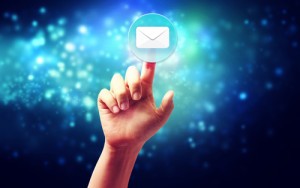Email marketing needs marketing automation to survive. Open Rates for bulk newsletters dropped 4 times in the last 5 years (Gleanster). Such messages no longer appeal to consumers, who expect personalized communication. But what it means exactly?
10 Commandments of Email Marketing. Download Free Ebook
Beyond the hype: the essence of personalization
It’s a capacious term and often repeated thoughtlessly, so let’s start with a clear and precise definition of that we mean when we use it.
Personalization indicates a set of actions undertaken to tailor the content, channel, form and delivery time of the marketing message to particular customers’ preferences, habits, demography and their current situation.
It includes a wide array of practices, like simple and superficial ones:
– adding recipient’s name/ company name in the subject line or the body of email
– delivering the message in the most suitable time for a given contact.
But real customization requires in-depth interventions into the content as such. It’s not about cosmetic adjustments like sending a bulk newsletter with customer’s name stuffed somewhere as a fig leaf, or delivering such mass message at the best time. We must change WHAT we say.
How to tap into Big Data? With dynamic 1-to-1 emails
Your visitors leave their digital footprints each time they open your emails (or ignore them), fill in the form, view products, buy something (or abandon it in the shopping cart), leave landing pages or watch a video. All these data, if gathered and processed, deliver you incredible insight into who your audience is. The source of the visit, content viewed or reactions to campaigns will undercover consumers habits, interests, and engagement.
Naturally, this kind of massive behavioral and demographic data can be of little use if not processed by a dedicated marketing technology. It’s impossible to turn web analytics into actionable knowledge without a specialized tool.
Let’s take a glance at how such process might look like
- When the customer views products A, B, and C, and then changes her mind, send an email with A, B and C, or with similar products to what already got her attention, not some random stuff.
- When the customer moves to the next level in the loyalty program or collected enough points to get a reward, send and email with that information, presenting the bonus she earned or can receive.
- On customer’s birthday send a message with a gift (like a discount, free delivery, access to premium content)
- When the customer watches a video or downloads an ebook about the problem Z, send her email invitation to the webinar about handling Z.
Can you see how it differs from regular newsletters?
Traditional email marketing software doesn’t allow you to use huge amounts of data you could leverage with Marketing Automation.
Quit the campaign mode
In the traditional email marketing scheme, marketers set the pace: they decide when to send a newsletter and their procedures, habits and rhythm, not the consumers’ needs, decide on the sending. But when customers control over 90% of the shopping process and can show us their purchase readiness (or lack of thereof), it’s time to give them more influence on the communication and add dynamic 1-to-1 emails to your arsenal.
It’s a difficult step for many professionals. Not because it entails implementation of the new software, but because if forces them to change their habits and giving up the campaign mode they grow used to. In that paradigm, the brand initiates the conversation (sending the newsletter) and then observes the outcomes.
But today, for marketers who base their actions on data and 1-to-1 messaging, everything is a campaign. Not just a bulk sending, but a rule of automation that personalizes the email for a person who visited a predefined page.
Email marketing as a part of a complex strategy
When you switch email marketing to Marketing Automation, you can utilize the synergy between all the channels, not isolate email.
What the synergy options are? You can shape your emails according to user’s behavior in other channels (for example the use of the mobile app) and the other way round (the knowledge messages the person opened informs you about her interests). Also, salespeople can benefit from access to that intelligence to start a conversation with a lead.
More data, more efficient use of the acquired knowledge, integrating all the channels and content personalization: these rewards wait for marketers willing to switch to automation platform with their emails.
Do you?
>> Learn more about Email Marketing vs. Marketing Automation

 Follow
Follow
















